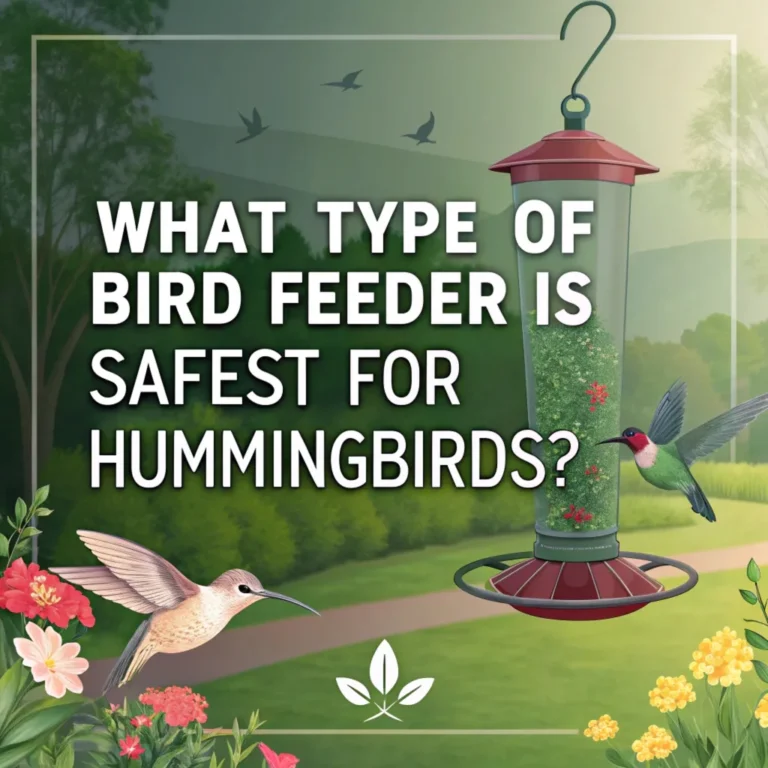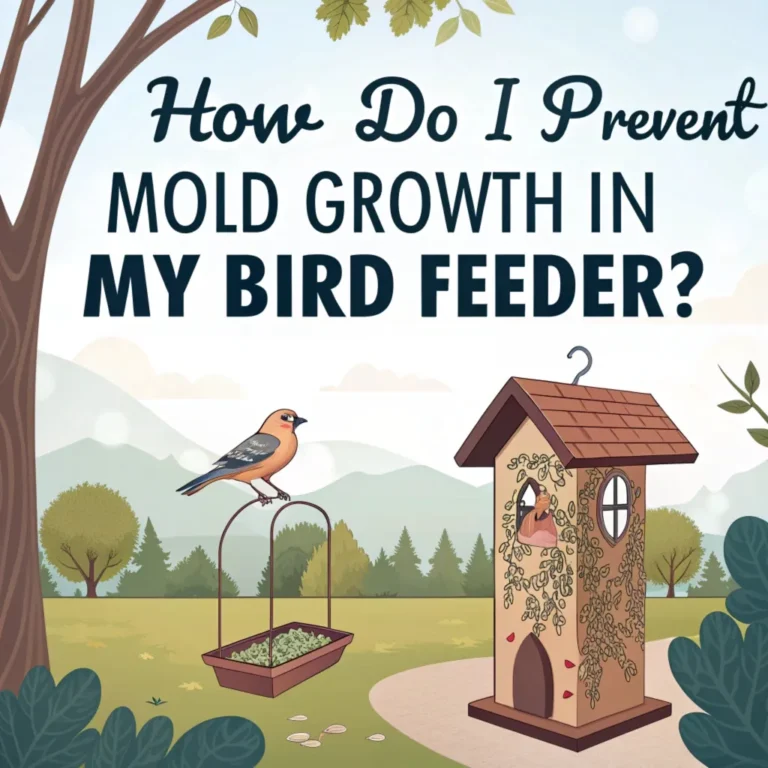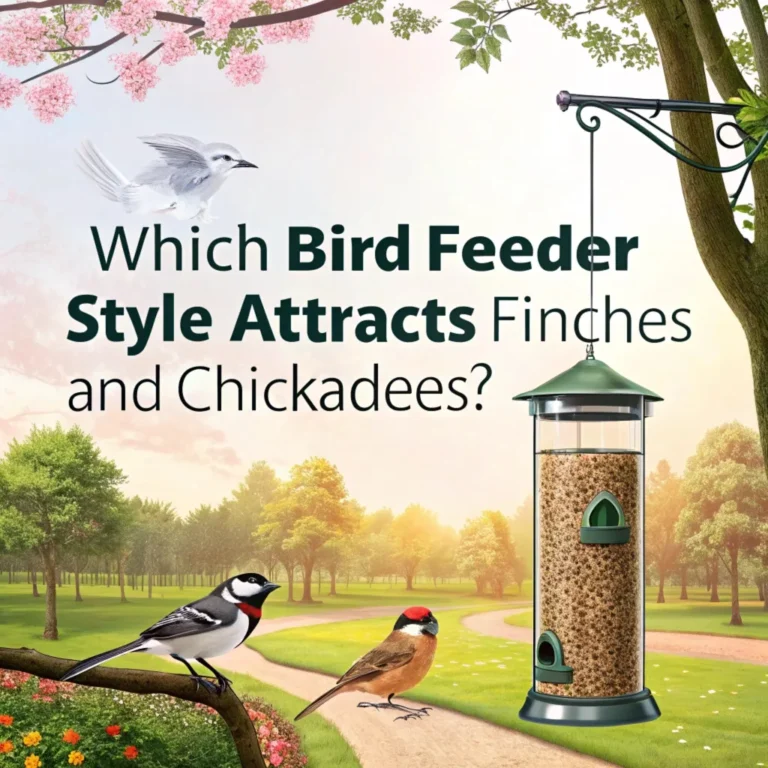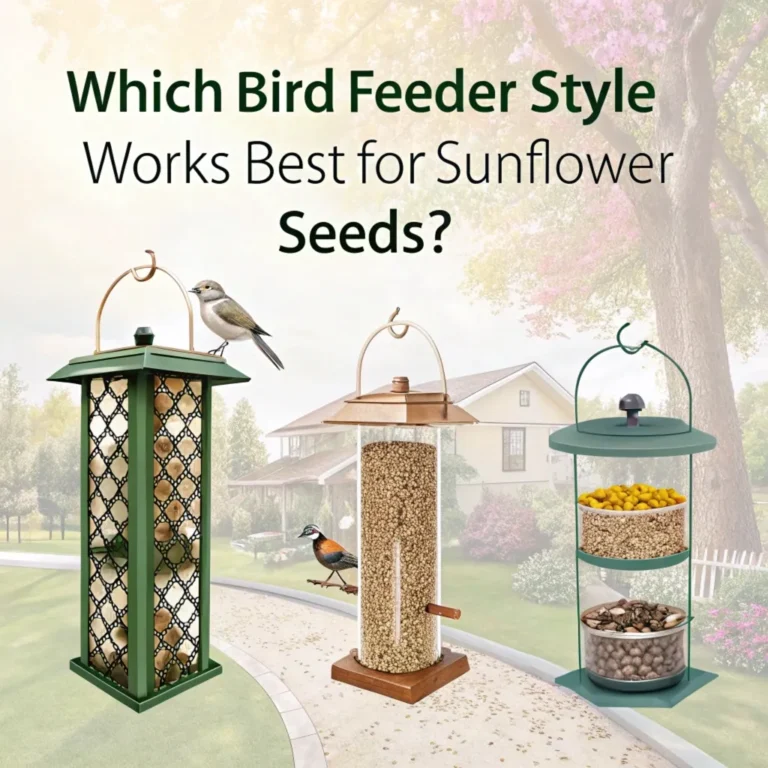Which Type of Bird Feeder Attracts Cardinals and Blue Jays?
Cardinals and blue jays bring vibrant colors to backyards. These birds have specific feeder preferences. This guide helps you choose the best feeders to attract cardinals and blue jays.
You will learn about different feeder types, their features, and placement tips. The information covers platform feeders, hopper feeders, tray feeders, and more.
This guide aims to help you enjoy frequent visits from cardinals and blue jays in your outdoor area.
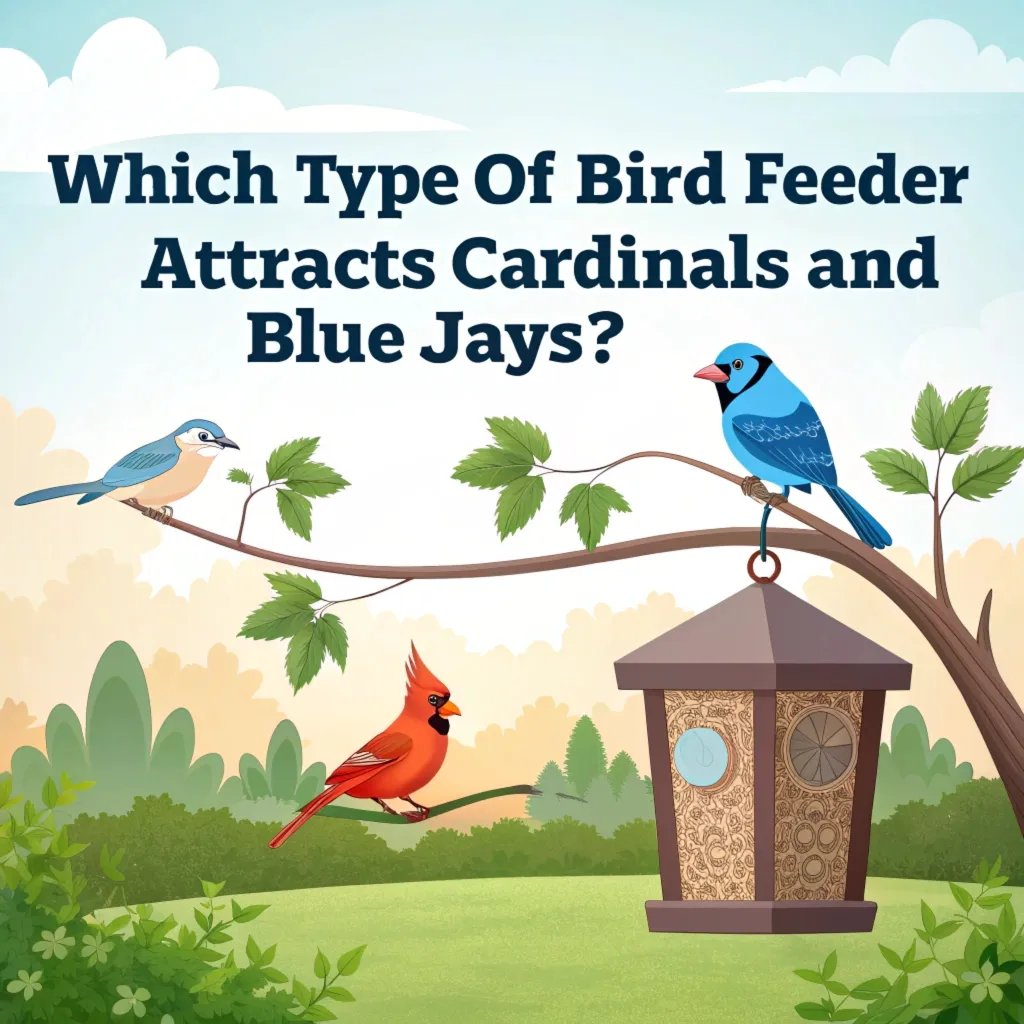
Key Takeaways
- Platform feeders provide ample space for larger birds like cardinals and blue jays
- Hopper feeders offer protection from weather while accommodating both species
- Tray feeders allow easy access and mimic natural ground feeding habits
- Peanut feeders specifically cater to blue jays’ love for nuts
- Squirrel-proof feeders help ensure the food reaches intended bird species
- Suet feeders attract both cardinals and blue jays, especially in winter
- Window feeders bring birds up close for easy viewing
- Placement near shelter increases birds’ comfort and feeder use
- Offering preferred foods like sunflower seeds and peanuts boosts attraction
- Regular cleaning maintains feeder hygiene and bird health
Platform Feeders: A Versatile Option
Platform feeders offer an open design that appeals to both cardinals and blue jays. These feeders provide a flat surface that mimics ground feeding, which both species prefer. The ample space allows multiple birds to feed simultaneously, reducing competition.
Key features:
- Open design for easy access
- Large feeding area
- Suitable for various seed types
Platform feeders work well for offering a mix of seeds, nuts, and fruits that attract both cardinals and blue jays.
Creating a welcoming environment for cardinals and blue jays involves more than just selecting the right feeder. Consider landscaping your yard with native plants that provide natural food sources and shelter.
Planting berry-producing shrubs, sunflowers, and trees with nuts can complement your feeding stations and create a year-round habitat for these colorful birds.
Regular observation of your backyard visitors can help you fine-tune your feeding strategy. Pay attention to which foods and feeders are most popular, and adjust accordingly to keep your feathered friends coming back.
Hopper Feeders: Protection and Capacity
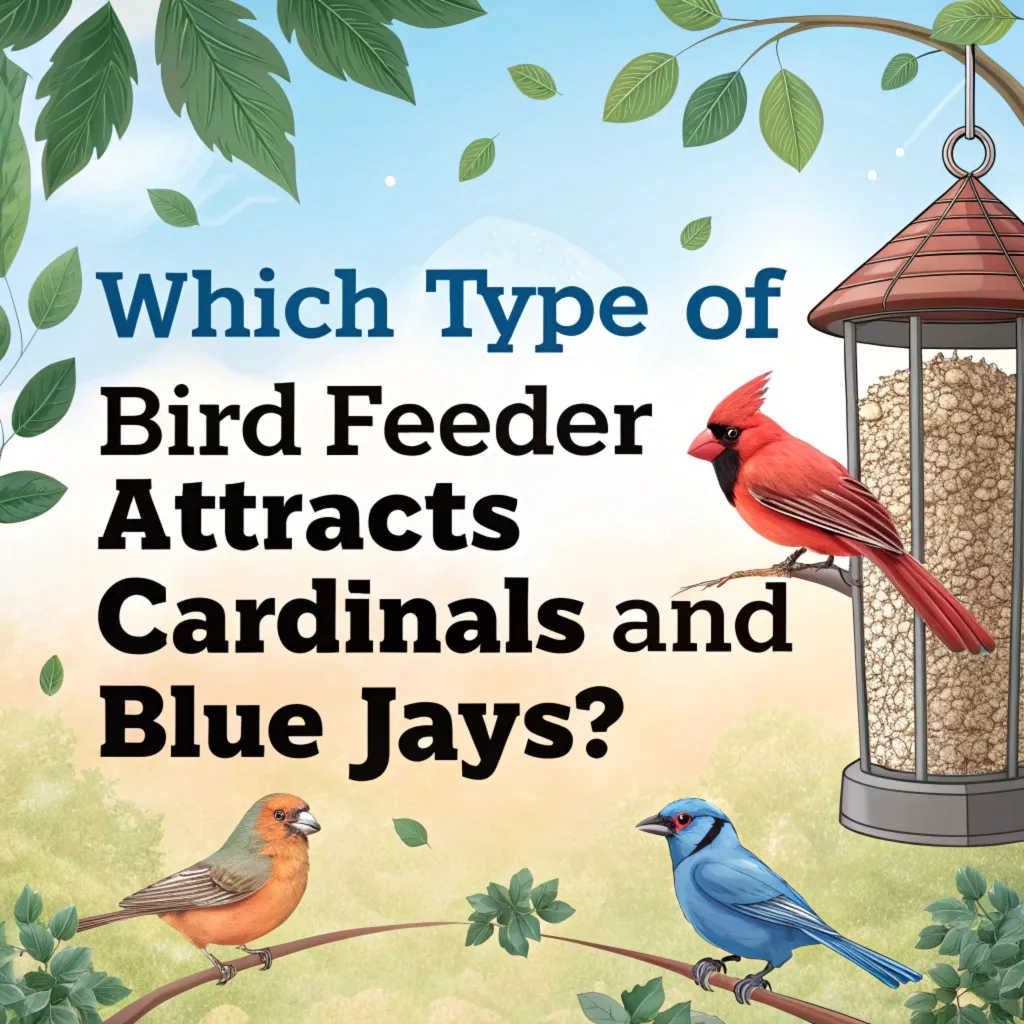
Hopper feeders feature a covered reservoir that dispenses seeds onto a small platform. This design protects food from weather while providing perches for feeding birds. Cardinals and blue jays both use hopper feeders comfortably.
Benefits:
- Weather protection for seeds
- Holds large quantities of food
- Allows for multiple feeding ports
Fill hopper feeders with black oil sunflower seeds or a mix containing safflower and peanuts to attract both species.
Enhancing your hopper feeder’s appeal can be achieved by adding a seed catcher tray beneath it. This not only reduces waste but also creates an additional feeding area for ground-feeding birds.
Consider installing multiple hopper feeders at different heights to accommodate various bird species and reduce competition.
Seasonal adjustments to your feeding routine can help support birds year-round. In winter, increase the fat content of your offerings with suet cakes or high-energy seed blends.
Tray Feeders: Ground-Level Dining
Tray feeders placed on the ground or mounted on short poles appeal to cardinals and blue jays. These feeders mimic natural feeding conditions and provide easy access for larger birds.
Advantages:
- Easy access for ground-feeding birds
- Accommodates various food types
- Simple to clean and maintain
Use tray feeders to offer a mix of seeds, nuts, and fruits that both cardinals and blue jays enjoy.
Enhancing the effectiveness of tray feeders involves strategic placement in your yard. Position them near shrubs or trees to provide cover for feeding birds, making them feel more secure.
Regularly refresh the seed in tray feeders to prevent mold growth and maintain food quality, especially after rainy weather.
Experiment with different food combinations in your tray feeders to discover what attracts the most birds. A mix of sunflower seeds, safflower, and peanuts can be particularly enticing for cardinals and blue jays.
Peanut Feeders: Blue Jay Magnets
Peanut feeders specifically cater to blue jays’ love for nuts. These feeders typically have wire mesh or large openings that allow birds to extract whole peanuts.
Features:
- Designed for whole or shelled peanuts
- Durable construction to withstand pecking
- Often have multiple feeding ports
While primarily attracting blue jays, cardinals may also visit peanut feeders occasionally.
Maximizing the appeal of peanut feeders involves offering a variety of nut options. In addition to peanuts, consider adding almonds or pecans to attract a wider range of birds.
Place peanut feeders at different heights around your yard to create multiple feeding stations and reduce competition among birds.
Monitor peanut consumption closely and refill as needed. Blue jays are known to cache food, so they may empty peanut feeders quickly.
Squirrel-Proof Feeders: Targeted Feeding
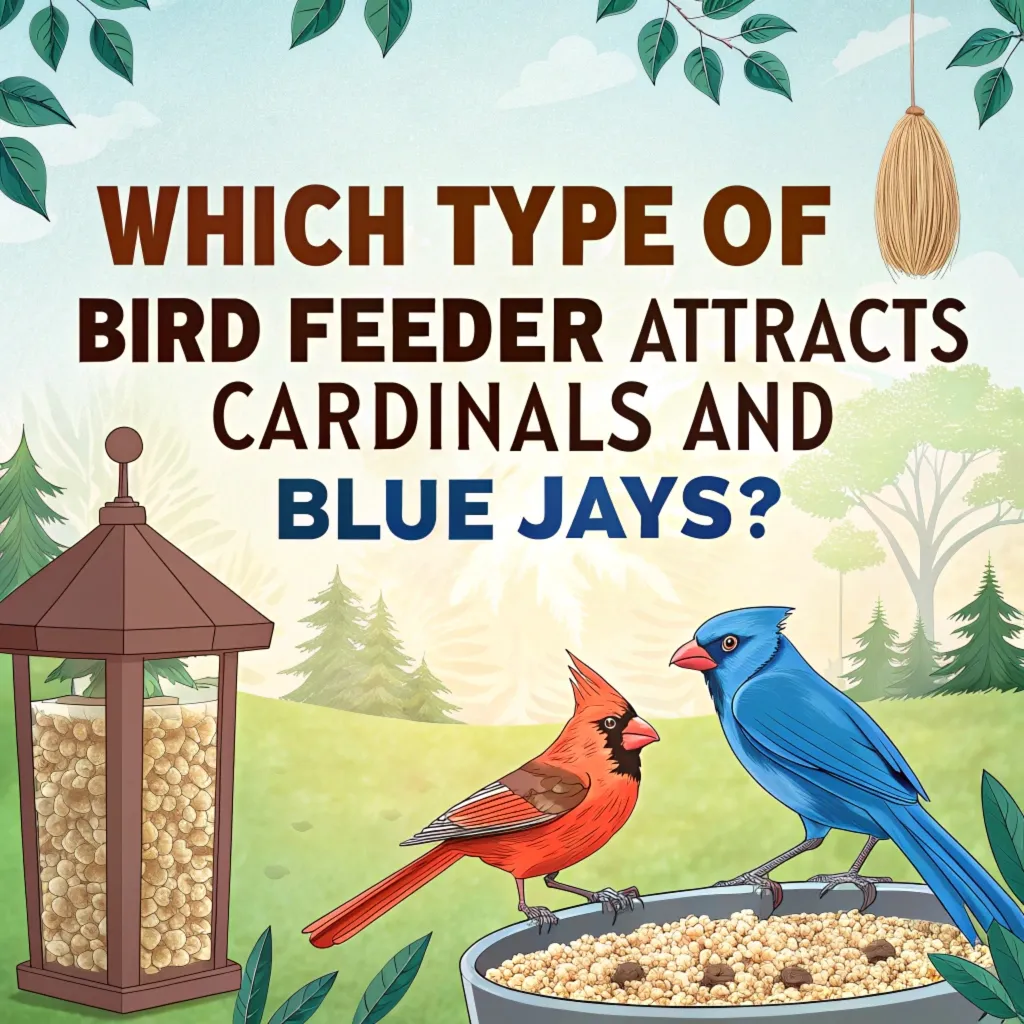
Squirrel-proof feeders help ensure that food intended for cardinals and blue jays reaches these birds. These feeders use weight-activated mechanisms or cages to deter squirrels.
Benefits:
- Prevents food waste
- Reduces competition from squirrels
- Allows birds to feed undisturbed
Choose squirrel-proof feeders with perches suitable for larger birds like cardinals and blue jays.
Enhancing the effectiveness of squirrel-proof feeders involves proper placement in your yard. Position them away from structures or trees that squirrels can use to jump onto the feeder.
Regularly maintain the feeder’s mechanisms to ensure they continue to function properly and deter squirrels effectively.
Combine squirrel-proof feeders with other feeding stations to create a diverse and attractive environment for various bird species.
Suet Feeders: High-Energy Option
Suet feeders attract both cardinals and blue jays, especially during colder months. These feeders hold high-fat suet cakes that provide essential energy.
Advantages:
- Offers high-calorie food source
- Attracts a variety of birds
- Easy to maintain and refill
Use suet feeders with large cakes or multiple feeding ports to accommodate cardinals and blue jays.
Maximizing the appeal of suet feeders involves offering different suet blends throughout the year. In warmer months, use no-melt suet formulas to prevent spoilage.
Position suet feeders near tree trunks or on sturdy branches to mimic natural foraging locations for woodpeckers and other suet-loving birds.
Regularly clean suet feeders to prevent the buildup of harmful bacteria and maintain a healthy feeding environment for your backyard birds.
Window Feeders: Up-Close Viewing
Window feeders bring birds close for easy observation. While not the primary choice for cardinals and blue jays, these feeders can attract them when filled with preferred foods.
Features:
- Attaches directly to windows
- Provides intimate bird-watching experience
- Easy to clean and refill
Fill window feeders with sunflower seeds or peanuts to increase chances of attracting cardinals and blue jays.
Enhancing the appeal of window feeders for cardinals and blue jays involves using bright colors or decorative elements that catch their attention.
Place window feeders at varying heights to accommodate different bird species and create a dynamic feeding area.
Combine window feeders with other feeder types in your yard to create a diverse and attractive environment for a wide range of bird species.
Feeder Placement Tips
Proper feeder placement increases the likelihood of attracting cardinals and blue jays. Consider these factors:
- Place feeders near natural shelter like trees or shrubs
- Position feeders at varying heights to accommodate different species
- Ensure feeders are visible to birds flying overhead
- Maintain distance from potential predator hiding spots
Creating a bird-friendly landscape around your feeders can significantly increase their effectiveness. Plant native species that provide natural food sources and shelter for birds.
Consider adding a water source, such as a birdbath or small fountain, near your feeding stations to create a complete habitat.
Regularly assess and adjust your feeder placement to optimize bird visitation and minimize potential hazards, such as window collisions or exposure to predators.
Preferred Foods for Cardinals and Blue Jays
Offering the right foods significantly impacts feeder success. Both cardinals and blue jays enjoy:
- Black oil sunflower seeds
- Striped sunflower seeds
- Safflower seeds
- Peanuts (whole or shelled)
- Cracked corn
- Suet (especially in winter)
Providing a variety of these foods in different feeder types maximizes attraction.
Enhancing your feeding strategy involves offering seasonal variations in your food selection. In spring and summer, include more protein-rich options like mealworms to support breeding birds.
During fall migration, increase the variety and quantity of high-energy foods to help birds prepare for their journey.
Consider growing native plants that produce natural food sources for cardinals and blue jays, such as serviceberry, dogwood, or sunflowers, to complement your feeder offerings.
Maintaining Feeder Hygiene
Regular cleaning keeps feeders safe and attractive for birds. Follow these steps:
- Empty and clean feeders every two weeks
- Use a solution of 1 part bleach to 9 parts water for disinfecting
- Rinse thoroughly and dry completely before refilling
- Remove old or wet seed from feeders promptly
- Clean up spilled seed beneath feeders to prevent mold growth
Implementing a consistent cleaning schedule is crucial for maintaining a healthy feeding environment. Keep a log of cleaning dates and any observed issues to help track and prevent potential problems.
Consider rotating multiple feeders to allow for thorough cleaning and drying without interrupting food availability for birds.
Educate family members or neighbors about the importance of feeder hygiene to ensure consistent care, especially if you’re away from home for extended periods.
FAQs
What is the best feeder type for cardinals?
Platform feeders and hopper feeders work well for cardinals, providing ample space and easy access to seeds.
Do blue jays prefer specific feeder types?
Blue jays readily use platform feeders, hopper feeders, and peanut feeders. They appreciate feeders that accommodate their larger size.
Can I attract both cardinals and blue jays to the same feeder?
Yes, both species often visit the same feeders. Offer a mix of seeds and nuts in larger feeders to accommodate both.
How high should I place feeders for cardinals and blue jays?
Place feeders 5 to 6 feet off the ground for easy access. Vary heights to reduce competition between species.
What seeds attract both cardinals and blue jays?
Black oil sunflower seeds and safflower seeds attract both species. Peanuts are particularly appealing to blue jays.
By selecting appropriate feeder types and offering preferred foods, you can create an inviting environment for both cardinals and blue jays in your backyard. Remember to maintain clean feeders and provide nearby shelter to ensure these colorful birds become regular visitors.
Citations:
[1] https://www.natureswaybirds.com/blogs/news/best-bird-feeders-for-cardinals
[2] https://www.bobvila.com/articles/best-bird-feeders-for-cardinals/
[3] https://www.perkypet.com/articles/how-to-attract-cardinals
[4] https://www.youtube.com/watch?v=7DRaqSa5VXo
[5] https://www.backyardwildbirds.com/Cardinal-Bird-Feeders_c_74.html
[6] https://www.fernsfeathers.ca/main-blog/3-colourful-birds
[7] https://shop.jacobijayne.com/blogs/news/best-bird-feeders-to-attract-cardinals-all-year-round
[8] https://gl.audubon.org/news/dos-and-don%E2%80%99ts-winter-bird-feeding
[9] https://ny.audubon.org/conservation/attracting-birds-your-feeder
[10] https://www.perkypet.com/articles/how-to-attract-blue-jays

Luna is the passionate founder and author of Birds and You, a website dedicated to sharing her love for birds with fellow enthusiasts. Through her engaging articles and guides, she aims to educate and inspire others to explore the fascinating world of birds. When she’s not writing, you can find Luna observing birds in their natural habitats or sharing beautiful bird photography on Pinterest. Join her on this journey to celebrate and protect our feathered friends!


